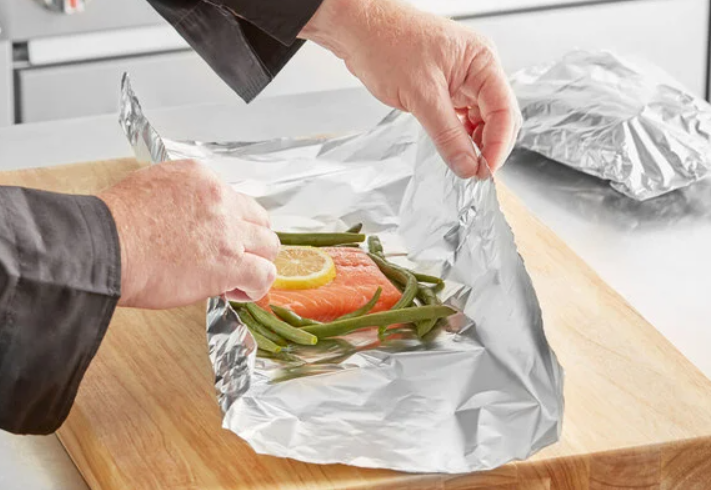Introduction
Aluminum foil is a kitchen staple, widely used for wrapping, cooking, and storing food. However, a common question arises Which side of the aluminum foil should touch the food? There’s a prevailing myth that one side of the foil is better suited for contact with food than the other. In this article, we delve into this topic to debunk the myth and provide clarity on the matter.

The Two Sides of Aluminum Foil
Aluminum foil typically has two distinct sides one shiny and reflective, while the other is dull and less reflective. This difference in appearance often leads to speculation about which side should come into contact with food. However, it’s essential to understand that both sides of the foil are essentially the same from a functional standpoint. The variance in appearance results from the manufacturing process and does not affect the foil’s performance or safety.
Manufacturing Process
During the manufacturing of aluminum foil, the metal is rolled into thin sheets and then processed through a series of rollers to achieve the desired thickness. As a result, one side of the foil comes into contact with the rollers, leaving it smoother and shinier, while the other side remains in contact with the conveyor belt, resulting in a duller appearance. This difference in surface texture is purely cosmetic and has no bearing on the foil’s suitability for food contact.
Food Safety Considerations
From a food safety perspective, both sides of aluminum foil are equally safe for contact with food. Aluminum is a food-safe material and does not pose any health risks when used appropriately. Whether you place your food on the shiny side or the dull side of the foil, it will not affect the taste, quality, or safety of the food. The most important factor is ensuring that the foil is clean and free from contaminants before use.

Practical Considerations
While there is no inherent difference between the two sides of aluminum foil in terms of food safety, some individuals prefer to use the dull side for certain applications, such as wrapping foods for storage or covering dishes during cooking. This preference is purely subjective and does not affect the efficacy of the foil. Ultimately, the choice of which side to use is a matter of personal preference and convenience.
Conclusion
In conclusion, the notion that one side of aluminum foil is better suited for contact with food than the other is a myth. Both sides of the foil are functionally identical and equally safe for use in food preparation and storage. Whether you use the shiny side or the dull side, it will not impact the safety, quality, or taste of your food. When handling aluminum foil, the most important considerations are ensuring cleanliness and proper food handling practices.


